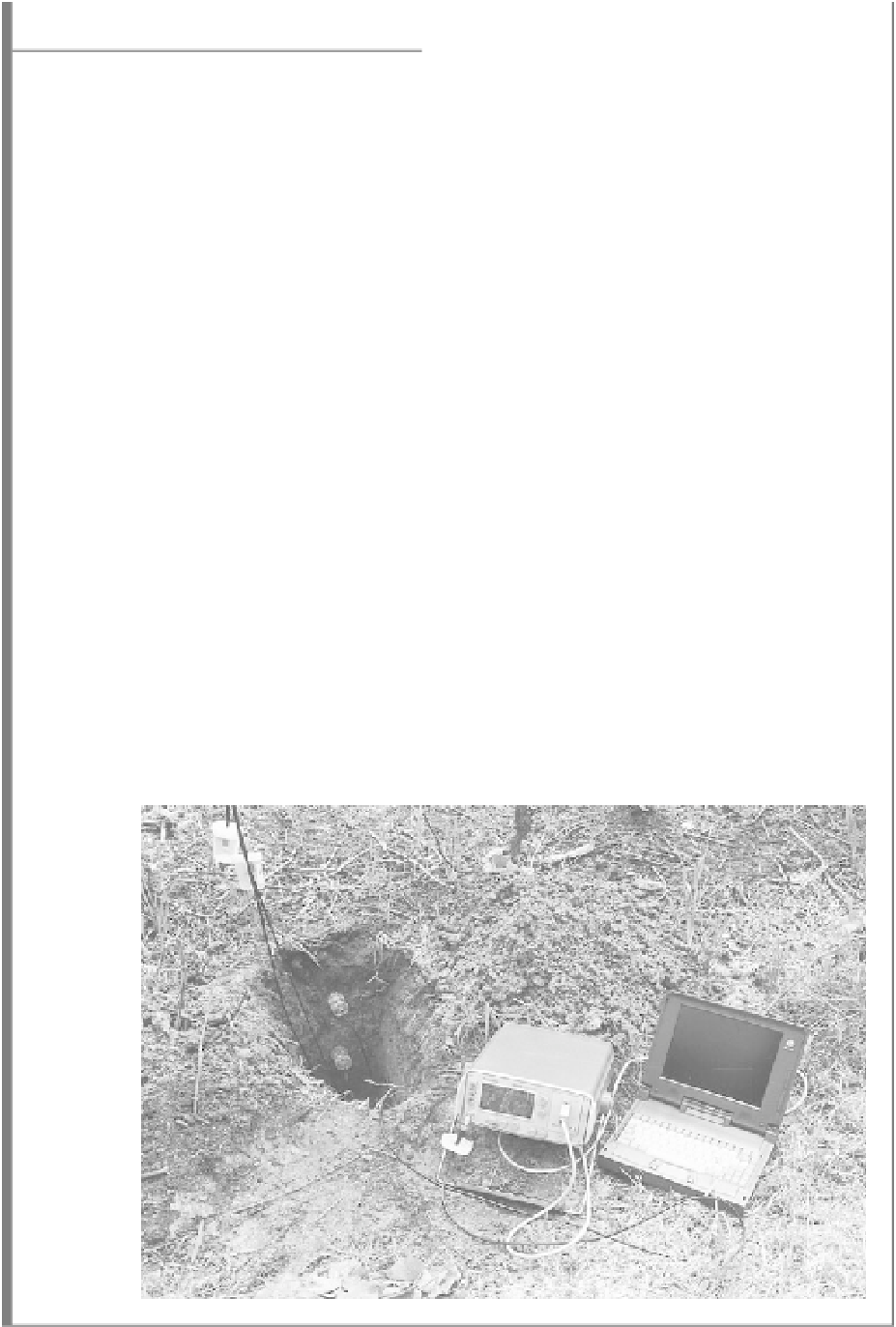Agriculture Reference
In-Depth Information
Box 6.9
Measuring Soil Water Content
The best instruments for vineyards are those that allow repeated,
nondestructive measurement of
at several depths. One such instrument is the
neutron probe
, which depends on the emission and reflection of neutrons from a
radioactive source. However, the probe does not give accurate readings within 20
cm of the soil surface, and it has the added disadvantage that the operator must
have a license to use radioactive equipment.
Other techniques rely on measuring the change in bulk soil permittivity with
a change in water content (water has a very high permittivity compared to soil
solids and air). An electromagnetic pulse is transmitted down steel waveguides
(probes) installed in the soil, and the time for the reflected pulse to return to a
receiver is measured. This is the basis of
Time Domain Reflectometry
(TDR). Figure
B6.9.1 shows probes installed in undisturbed soil under a vine row. The pulse
generator and receiver in this case were incorporated in a “Tektronix” cable tester.
Other TDRs have the generator and receiver built into the probe head. The TDR
measures
in a narrow cylinder of soil surrounding the probes.
A similar technique that relies on detecting changes in bulk soil permittivity
with water content is
Frequency Domain Reflectometry
(FDR). This is the basis of
the
capacitance probe
, which can be permanently installed in soil or lowered down
a narrow-bore PVC tube to different depths. The orientation of the probe in the
tube must be kept constant, and there should be no air gaps between the tube wall
and the surrounding soil, otherwise false readings are obtained. Both TDR and
FDR allow measurements to be made close to the soil surface.
More specific details of these instruments are given in Pudney et al. (2001).
Figure B6.9.1
TDR probes, with Tektronix cable tester, installed in a vineyard soil. Photograph by the
author.

